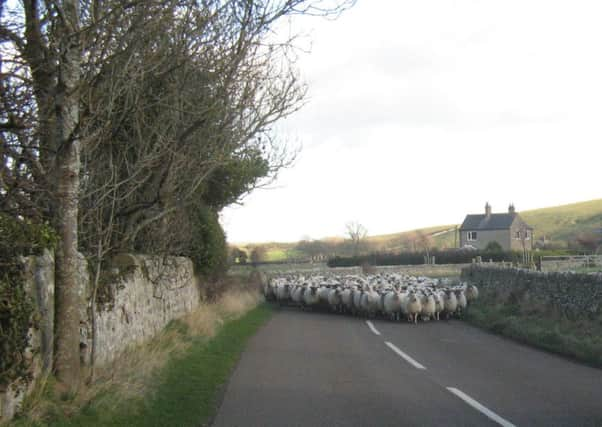No joined-up thinking


The Alnwick-Coldstream line was built by the North Eastern Railway in the 19th century when everybody wanted a railway and investors thought that railway shares offered a certain reward.
However, this part of Northumberland was, and is, sparsely populated, so passenger traffic was particularly thin. The main expectation of reward was from livestock and agricultural produce. The flock of sheep in the accompanying image would have gone to market by train.
Advertisement
Hide AdAdvertisement
Hide AdMany railways which never had a hope of profitability were built during that century – and this line was high on that list.
At Coldstream station, which was actually in Cornhill, the line joined that from St Boswells and Kelso to Tweedmouth. That line was also North Eastern as far as Kelso, beyond which it was the North British Railway. A little irony was that just before it left England, the North Eastern passed Carham Hall, residence of the North British chairman.
In those days railways were regarded as businesses, and therefore taxable, but the First World War wreaked havoc with the state of lines and there was a serious proposal to nationalise them and for the state to run them at a loss as a national asset.
Instead, the government hoped to keep them going as viable businesses, but following the war ex-servicemen bought redundant army lorries and set up small businesses carrying goods and passengers, and this trend resulted in the loss of business to railways.
Advertisement
Hide AdAdvertisement
Hide AdIn 1923 the North Eastern and North British both became part of the London and North Eastern Railway (LNER), when about 120 firms were amalgamated into four broadly territorial companies. The LNER was the least profitable of these, in 1926 earning only one-fifth of its target revenue.
Help came in 1928 when an Act of Parliament enabled the railways to operate buses themselves.
Rather than do that, however, they chose to buy shares in existing bus companies. When they tried to take over United Automobile Services lock stock and barrel, there was an almighty row with the group to which United belonged, and it was agreed that as a principle the railways could have equal shares with the bus groups.
Despite this agreement, the railways never exercised their influence with the bus firms to run the buses to railway stations. As much as to thumb their nose at their new partners, the busmen proceeded to spend the 1930s building bus stations in many towns as far from the railway station as possible.
Advertisement
Hide AdAdvertisement
Hide AdOne of the railway-appointed directors of a bus company told the writer that he really did not know why he was there, but the company put on a good lunch, so he went to the meetings.
What the railways did was to take the opportunity of their share holding to withdraw loss-making local passenger services like those on the Alnwick-Coldstream line and give the business to bus companies. There was more help in a similar Act which gave the railways authority to operate lorries. They set up Country Lorry Services as local carriers, and incidentally to collect and deliver goods to and from railway stations.
This was much more satisfactory than the opportunities they had squandered with the buses.
After the Second World War the railways were in an even worse state than they had been after the First, partly because of aerial bombing. This time they really were nationalised, and so was road haulage, but road and rail were kept apart rather than integrated.
Advertisement
Hide AdAdvertisement
Hide AdWorse was to come when the National Bus Company and Scottish Transport Group were formed in 1969. Despite trains, most buses and ferries now being publicly owned, there was no requirement for them to work together – so they mostly didn’t. Buses and ferries in Scotland did, of course, because they always had, but the long-established connection between the ferries and the railways gradually broke down, and the situation in England was no improvement on the previous unsatisfactory arrangement.
Towards the end of the 20th century things began to look up. Some far-sighted managers began to drag the railways up by their own bootlaces, and the privatised companies which took over railway services in 1997 subsequently have been receiving the credit for the results.
It is to be hoped that those managers, now well into retirement, know the saying that you can do a great deal of good in this world so long as you do not mind who takes the credit.
z John Wylde is the author of “Integrated Transport – a Will-o’-the-wisp?” This book is priced at £14.95, post paid, and signed by the author. Also “Experiments in Public Transport Operation” at £11.95.
Order through the author’s website, www.john-wylde.co.uk, or from Grieves on the corner of Church Street in Berwick.